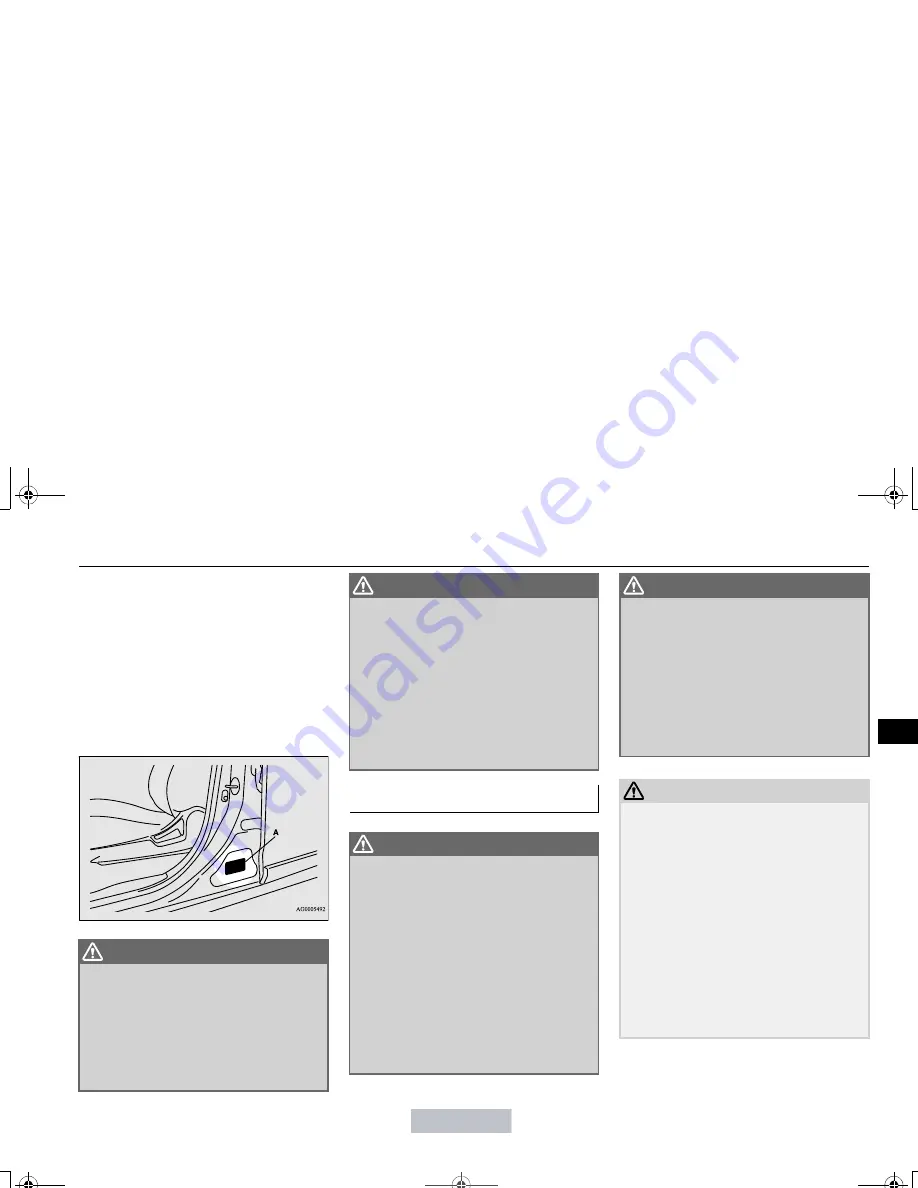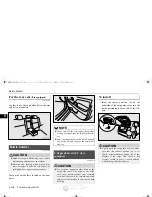
Cargo loads
Driving safety
6-11
6
occupants from the vehicle capacity weight.
For additional information, if needed, refer to
“Steps for Determining Correct Load Limit”
on page 6-8.
DO NOT USE the Gross Vehicle Weight Rat-
ing and Gross Axle Weight Rating numbers
listed on the safety certification label (A)
located on the inside sill of the driver’s door
as the guide for passengers and/or cargo
weight.
N00630400100
WARNING
To reduce the risk of serious injury or
death, the combined weights of the driver,
passengers and cargo and must never
exceed the vehicle capacity weight.
Exceeding the vehicle capacity weight will
adversely affect vehicle performance,
including handling and braking, and may
cause an accident.
Do not load cargo or luggage higher than
the top of the seatback. Be sure that your
cargo or luggage cannot move when your
vehicle is in motion.
Having either the rear view blocked, or
your cargo being thrown inside the cabin
if you suddenly have to brake can cause a
serious accident or injury or death.
Put cargo or luggage in the cargo area of
your vehicle. Try to spread the weight
evenly.
Loading cargo on the roof
WARNING
Weight placed on the roof of the vehicle
will raise the vehicle’s center of gravity
and adversely affect its handling charac-
teristics. As a result, driving errors or
emergency maneuvers could lead to a loss
of control and result in an accident. Drive
slowly and avoid excessive maneuvers
such as sudden braking or quick turning.
Make sure that the weight of luggage and
the roof carrier do not exceed the maxi-
mum roof load, 176 lb (80 kg). If the maxi-
mum roof load is exceeded, this could
cause damage to the vehicle or result in an
accident.
WARNING
The total weight of all occupants and lug-
gage, including your roof load, must not
exceed the vehicle capacity weight. For
more information, refer to “Tire and load-
ing information placard” on page 11-2
Roof load is determined by adding the
weight of the roof carrier and the weight
of the luggage placed on the roof carrier.
For additional information, refer to
“Maximum roof load” on page 11-3.
CAUTION
Do not load luggage directly onto the roof.
Use a roof carrier that properly fits your
vehicle.
For installation, refer to the instruction man-
ual provided with the roof carrier.
Place the luggage on the carrier so that its
weight is distributed evenly with the heaviest
items on the bottom. Do not load items that
are wider than the roof carrier.
When attaching/removing the roof carrier
and loading/removing luggage, do not apply
excessive pressure on a single point.
Depending on how and where the force is
applied, this may cause dents on the vehicle
roof.
WARNING
BK0206700US.book 11 ページ 2014年3月25日 火曜日 午後4時42分
Summary of Contents for 2015 OUTLANDER SPORT/RVR
Page 247: ...BK0206700US book 14 ページ 2014年3月25日 火曜日 午後4時42分 I n f o r ma t i o nP r o v i d e db y ...
Page 323: ...BK0206700US book 16 ページ 2014年3月25日 火曜日 午後4時42分 I n f o r ma t i o nP r o v i d e db y ...
Page 371: ...BK0206700US book 6 ページ 2014年3月25日 火曜日 午後4時42分 I n f o r ma t i o nP r o v i d e db y ...
















































